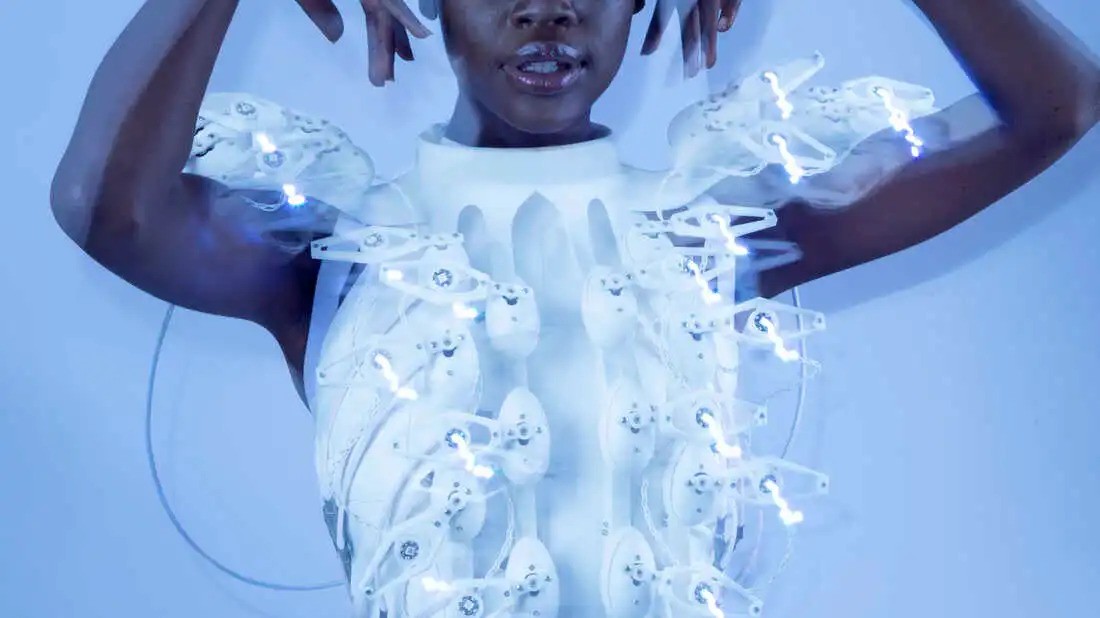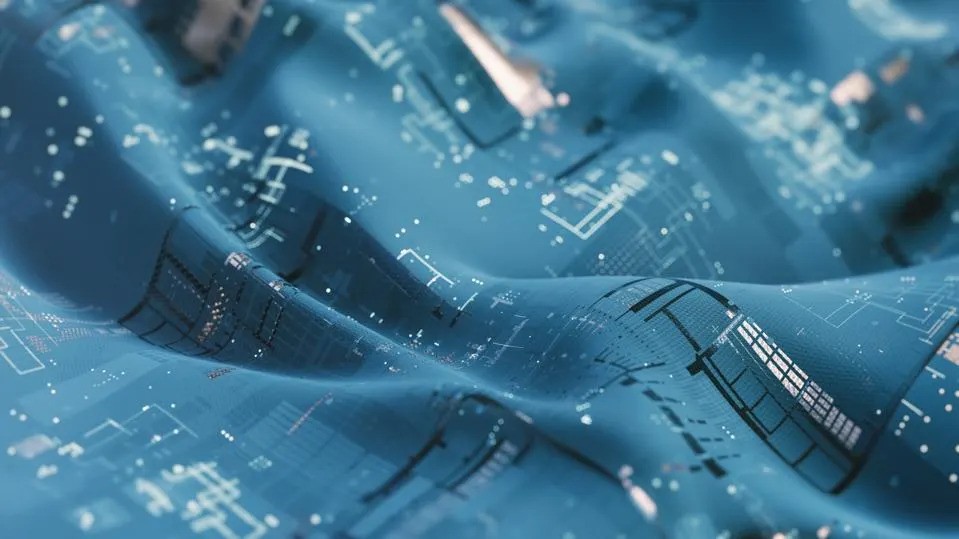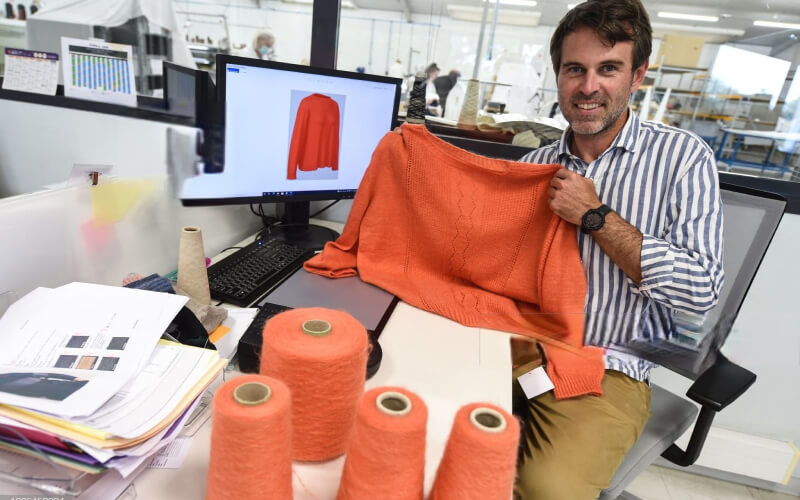Fashion Tech Innovations - Revolutionizing The Apparel Industry
Explore the dynamic convergence in fashion tech innovations, showcasing groundbreaking advancements that are reshaping the way we dress and experience fashion. From smart fabrics to AI-powered styling, this article delves into the transformative impact of fashion tech on design, production, and consumer engagement.
Author:Elisa MuellerReviewer:James PierceFeb 23, 20248.2K Shares118.9K Views

In the ever-evolving landscape of the apparel industry, the convergence of fashion and technology has led to groundbreaking innovations. From smart fabrics to virtual try-ons, these advancements are not only changing the way we dress but also revolutionizing how garments are designed, produced, and experienced.
Let's explore the transformative impact of fashion tech innovationson the apparel industry.
Smart Fabrics
Smart fabrics refer to textiles that incorporate advanced technologies, such as sensors, conductive fibers, and microelectronics, to provide various functionalities beyond traditional fabrics. These fabrics can monitor physiological data, adjust temperature, and even communicate with other devices.
Smart fabrics are revolutionizing industries ranging from fashion and healthcare to sports and military by offering enhanced comfort, functionality, and performance.
Wearable Technology
Wearable technology, often referred to as wearables, encompasses electronic devices that can be worn on the body as accessories or clothing. These devices typically incorporate advanced sensors and computing capabilities to track various metrics such as activity levels, heart rate, and sleep patterns.
Wearable technology includes smartwatches, fitness trackers, smart glasses, and even smart clothing with embedded sensors.These devices provide users with valuable insights into their health and fitness, facilitate communication, and enhance productivity in daily life.
Virtual Try-Ons
Virtual try-ons are digital platforms or applications that enable users to virtually try on clothing, accessories, or cosmetics using augmented reality (AR) or virtual reality (VR) technology. By leveraging computer-generated imagery, users can see how items look on themselves in real-time without physically trying them on. \
Virtual try-ons revolutionize the online shopping experience by allowing consumers to visualize how garments fit and look on their bodies before making a purchase. This technology enhances convenience, reduces the need for physical store visits, and increases confidence in online shopping decisions.
3D Printing
3D printing, also known as additive manufacturing, is a revolutionary technology that creates three-dimensional objects by adding successive layers of material based on a digital model. In the realm of fashion, 3D printing is transforming the way clothing, footwear, and accessories are designed and produced.
Designers utilize 3D printing to create intricate and customizable garments with unparalleled precision and efficiency. This technology enables the production of unique designs, personalized fits, and sustainable solutions by minimizing material waste.
Additionally, 3D printing facilitates experimentation with innovative materials and textures, pushing the boundaries of creativity in the fashion industry.
Sustainable Fashion Tech
Sustainable fashion tech refers to innovative technologies and practices aimed at reducing the environmental impact of the fashion industry while promoting ethical and sustainable production processes.
This includes the development of eco-friendly materials, such as organic fabrics, recycled fibers, and biodegradable textiles, as well as advancements in production techniques that minimize waste and pollution.
Sustainable fashion tech also encompasses initiatives focused on transparency, fair labor practices, and circular economy models to create a more socially and environmentally responsible fashion ecosystem.
AI-Powered Styling
AI-powered styling involves the use of artificial intelligence algorithms to provide personalized fashion recommendations and styling advice to consumers. These algorithms analyze vast amounts of data, including individual preferences, body measurements, style trends, and purchasing history, to generate tailored outfit suggestions.
AI-powered styling platforms can offer recommendations for clothing, accessories, and even entire outfits that suit a user's unique taste and body type. By harnessing the power of AI, these platforms enhance the online shopping experience, increase customer satisfaction, and drive sales for retailers.
RFID Technology
RFID (Radio Frequency Identification) technology is a wireless communication technology that uses electromagnetic fields to automatically identify and track tags attached to objects. In the context of fashion, RFID technology involves embedding small electronic tags or labels into clothing and accessories.
These RFID tags contain unique identification codes that can be scanned and read by RFID readers, enabling retailers to track inventory, monitor product movement, and manage stock levels more efficiently. RFID technology enhances supply chain visibility, reduces theft, and improves inventory accuracy in the fashion industry.
Collaborations Between Fashion And Tech Companies
Collaboration is key to driving innovation in the fashion tech space. By partnering with tech companies, fashion brands can access cutting-edge technologies and expertise to push the boundaries of creativity and functionality.
These cross-industry collaborations not only fuel the development of new products and services but also pave the way for exciting advancements in the field of fashion tech. Conversely, tech companies may collaborate with fashion brands to enhance their products with stylish designs, improve user interfaces, or explore new markets within the fashion industry.
These collaborations drive innovation, push boundaries, and shape the future of both industries.
Challenges And Opportunities In Fashion Tech
Navigating the intersection of fashion and technology presents both challenges and opportunities for industry stakeholders. One significant challenge lies in keeping pace with the rapid evolution of technology, which requires continuous adaptation and investment to remain competitive.
Integrating technology into traditional fashion processes also poses logistical hurdles, such as ensuring compatibility between systems and overcoming resistance to change among employees.
However, amidst these challenges, there are numerous opportunities for innovation and growth. Wearable technology and smart fabrics enable designers to create functional and innovative garments that cater to evolving consumer needs. Virtual try-on platforms and augmented reality applications revolutionize the online shopping experience, offering immersive and personalized interactions.
Moreover, advancements in sustainable fashion tech, such as eco-friendly materials and circular production models, address growing concerns about sustainability and environmental impact. By navigating these challenges and capitalizing on opportunities, fashion companies can position themselves at the forefront of the evolving fashion landscape, driving innovation and sustainability in the industry.
FAQs About Fashion Tech Innovations
What Are The Key Benefits Of Fashion Tech Innovations?
Fashion tech innovations offer benefits such as enhanced comfort, functionality, and personalization, as well as sustainability and efficiency improvements across the supply chain.
How Are Fashion Brands Incorporating Sustainability Into Their Tech Initiatives?
Fashion brands are integrating sustainability into their tech initiatives through initiatives such as recycling and upcycling technologies, eco-friendly materials, and sustainable production processes.
What Challenges Does Fashion Tech Face?
Challenges in fashion tech include privacy concerns, accessibility issues, and the potential impact of automation on traditional roles within the industry.
How Are Digital Fashion Shows Changing The Industry?
Digital fashion shows are revolutionizing the industry by offering a creative alternative to traditional runway events, enabling global accessibility and immersive experiences for both designers and consumers.
What Does The Future Hold For Fashion Tech?
The future of fashion tech is characterized by continued innovation and integration, with advancements in areas such as AI, sustainability, and digital experiences shaping the way we dress and engage with fashion.
Conclusion
Fashion tech innovations are reshaping the apparel industry, offering new avenues for creativity, sustainability, and consumer engagement. From smart fabrics to digital fashion shows, these advancements are not only enhancing the way we dress but also transforming how garments are designed, produced, and experienced.
Looking ahead, the future of fashion tech is filled with boundless possibilities. As technologies continue to evolve and converge, we can expect to see even greater integration of tech-driven solutions across the apparel industry.
From AI-powered design tools to blockchain-based supply chain transparency, the future of fashion tech promises to be both innovative and inclusive, shaping the way we dress and experience fashion for years to come. As we embrace the era of fashion tech, one thing is certain: the future of fashion is smart, sustainable, and infinitely stylish.

Elisa Mueller
Author

James Pierce
Reviewer
Latest Articles
Popular Articles

